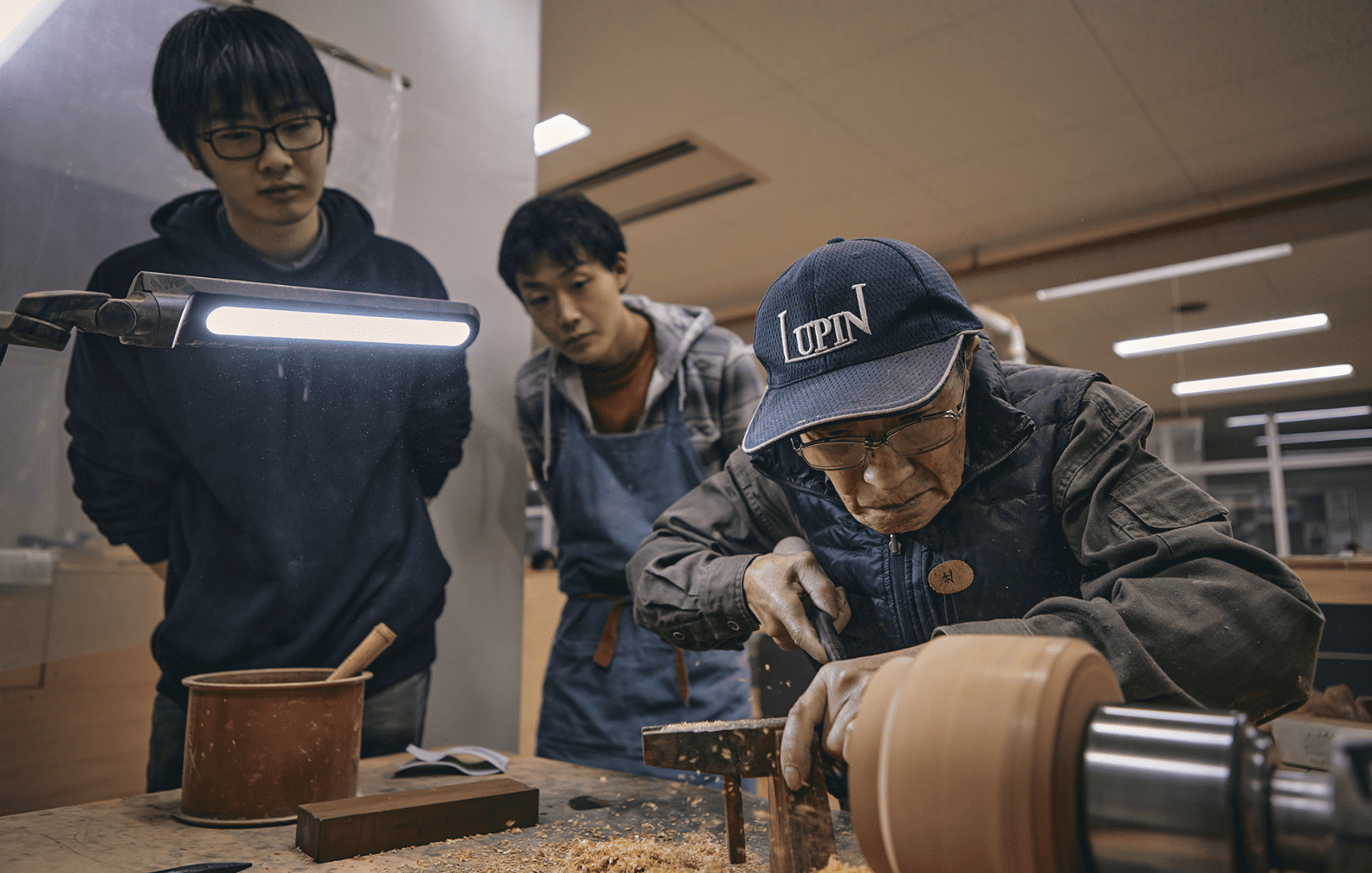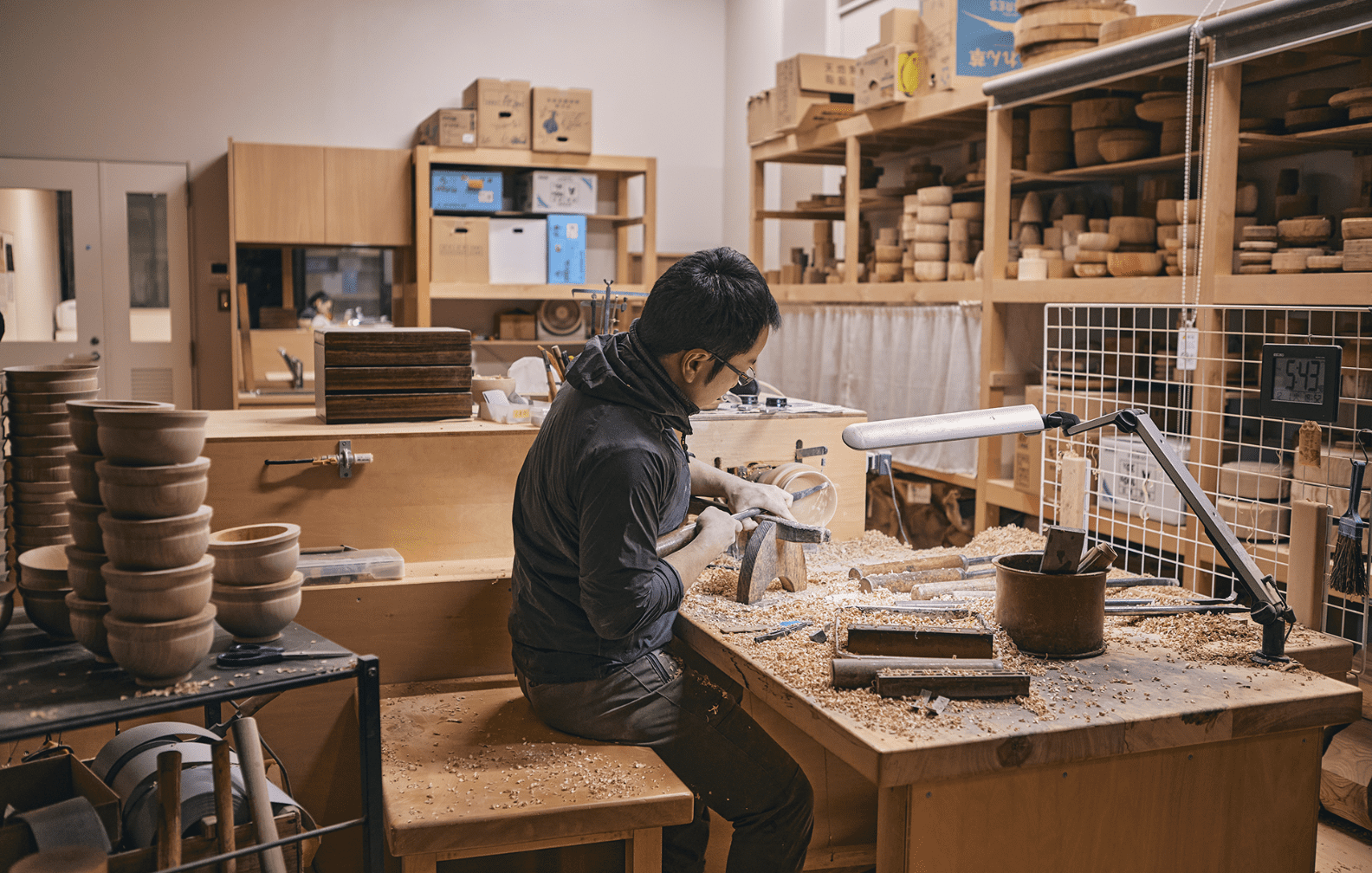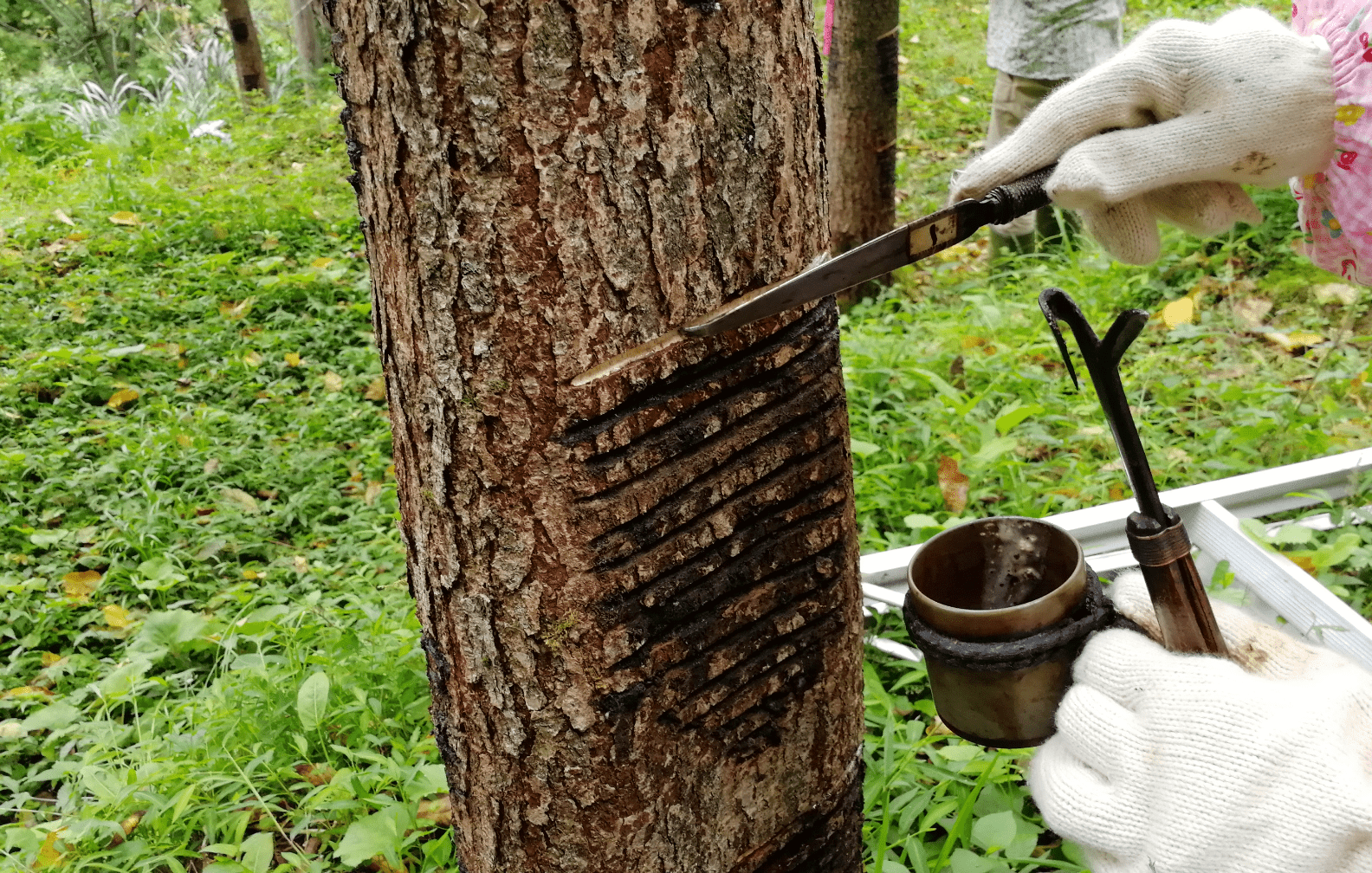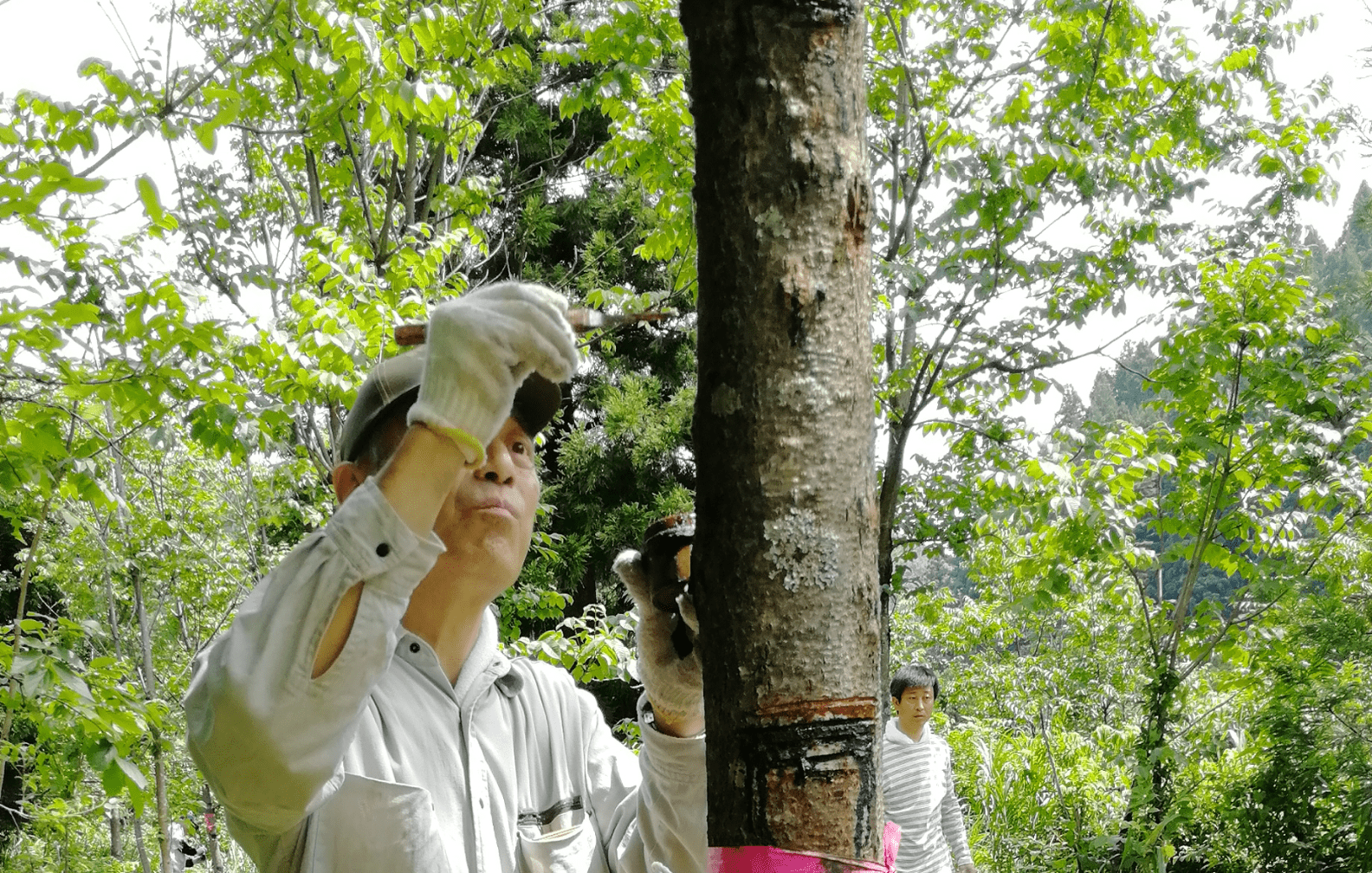Yamanaka CraftsmanHand over to the next generation
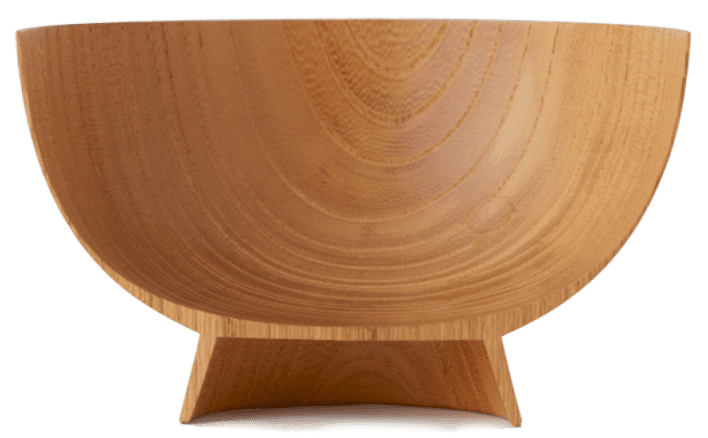
The lack of successors in traditional industries is a social issue not only in Yamanaka, but throughout the country. Yamanaka has focused on initiatives to pass on long-held skills to the next generation. We will continue to evolve our efforts to create an environment that responds to the desire of young people to become craftspeople, such as by developing the curriculum of our training centre, which is Japan's only vocational school for the art of grinding wheels, and by opening rental workshops to support craftspeople in becoming independent.
Ishikawa Wheel-Throw Technology Training Institute for Groundwork
Located within the Ishikawa Prefectural Yamanaka Lacquerware Industrial Technology Centre, this is the only training centre in the country where visitors can specialise in the techniques of hewn wheel turning and lacquer craftsmanship.
After two years of basic skills training, the apprentice enters a specialised course in the third year, where they spend two to three years in the workshop of a local craftsman while also attending a training institute, focusing on acquiring skills on the job. After 4-5 years, the apprentices generally become independent and set up their own workshop. As of the end of March 2020, the school had produced 105 graduates since it opened in 1997. They are employed as joiners and lacquerware workers and are active all over the country.
Rental workshop
The Yamanaka Lacquerware Industrial Technology Centre has a rental workshop that young woodworkers can rent for a fixed period of time. The workshop is equipped with a potter's wheel for up to three years.
The facility is available at a very low cost of approximately JPY 6,000~ per month and provides support up to the point of opening an independent business. It is also used as a place for communication, with users exchanging techniques and opinions with other craftspeople.
Urush tree planting activities
Lacquer is the sap of the poison oak tree and only a small amount can be collected from each tree.
Currently, most of the domestic demand is met by foreign lacquer, and only a very small amount is produced domestically. In order to pass on domestic lacquer, which has been a familiar part of Japanese life since ancient times, to the next generation, we have been planting, managing and caring for approximately 1,600 poison oak trees since 2006. Eventually, we would like to use lacquer produced in Yamanaka to make products and boost the production area. We are continuing our activities with the hope of preserving the culture of lacquer ourselves.


